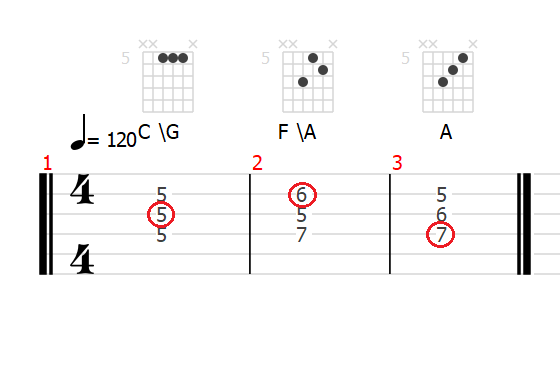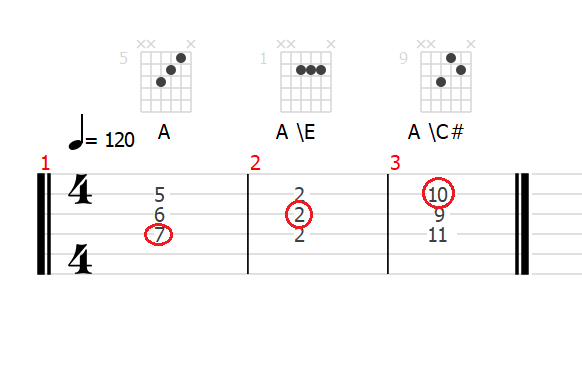Beginners usually start learning chords with open strings, i.e. at the first couple of frets, and covering all strings. Most important of these are the E and A chord forms, as they can be played as barré chords and thus moved up the neck to get other chords. The first barré chord taught is usually the F chord, which uses the E form moved up one fret.
I then stumbled upon quite a number of songs that make use of mostly the D, G, and B strings, e.g. Brown Sugar by the Rolling Stones. At the fifth fret, this provides three possibilities for major chords:

I’ve circled the root note of each – the first two are inversions, the third is a standard A chord, derived from the E form but omitting both E strings and the A string. Especially the combiation of the first and second chord form is often found, as it allows for easy switching between the first and fourth, e.g. C and F, as pictured above. The fourth (sub dominant) has a special meaning in harmonics. Brown Sugar makes extensive use of this.
These three forms also mean that there are three positions on the neck where you can play a given chord, e.g. the A chord (root note circled):

This can of course be applied to all other chords, too. You can use this to minimize your movement along the neck.